The Shrimp Pad Thai Recipe has rich flavors from the noodles flash-cooked under high heat with a spice paste and a sauce mixture that uses natural date syrup instead of sugar. This diabetic-friendly recipe uses millet and wheat noodles that are fried with shrimp, tofu, eggs, and bean sprouts and garnished with roasted peanuts. It is healthy without the addition of palm sugar or rice noodles and you can use any leftover chicken or seafood!
If you can’t tell, I’m a fan of noodles. Given a choice of rice or noodles, I always lean toward noodles. They’ve become comfort food for me. There’s something basic and simple about them. I sometimes ponder over how noodles could not only nurture but also comfort me. Noodles are basic and simple, more like an everyday meal, yet they help sustain me. The texture of noodles and the wonderful feeling that we get when we eat a bowl of soupy noodles or fried ones have the power to uplift.
Origin:
The Shrimp Pad Thai recipe is just as tasty as the one with shrimp and chicken. It is one of those dishes that is both easy and quick to make. On a cold day, there is nothing as summery and tropical as a steaming plate of Shrimp Pad Thai. It is one of those dishes that can claim to be a true national dish of Thailand. Urban legend has it that it was created in the the1930s as a consequence of war and flood. What can be more Thai than stir-fried noodles spiced with local ingredients such as peanuts, tamarind, and palm sugar? In case you are wondering, “Pad” in Thai food means “fried”.
My inspiration for the Shrimp Pad Thai Recipe:
I first tried the Shrimp Pad Thai while vacationing in Bangkok many years ago. The tour guide took us to Thipsamai Pad Thai, one evening. Little did I know that this unassuming restaurant was the most famous Pad Thai shop in Bangkok. They serve their charcoal-cooked noodles wrapped in an omelet with prawns. I became an instant fan. Over the years, I have tried Pad Thai in various countries. They were all flavorful and slightly different based on the locally available ingredients, but Thipsamai is still the one that I remember.
Thai cooking is more about ease of preparation. Their cuisine is generally quick to make, thus making meal prep not so cumbersome. This ease of cooking frees up their day, making room for other activities. The recipe for the indulgent Shrimp Pad Thai has a reputation for being less than healthy. Done badly, Pad Thai is essentially noodles fried with a lot of oil, accompanied by a sugar and sodium-rich sauce.
My version is healthier. I like using oil sparingly and letting the fresh ingredients and sauce speak for themselves. Over the years, I have experimented with a variety of noodles, oils, and sauces. The commercial premade Pad Thai sauces tend to have a lot of additives and preservatives and are a little on the sweeter side. Here in this Shrimp Pad Thai recipe, I have created a spice paste and sauce mixture that gives the perfect balance of sweet, sour, and spicy flavor profiles.
My Shrimp Pad Thai recipe is my version of the Thai curry paste. This makes the difference. If you think about flash-fried noodles, the one common theme is that they are quick. While talking about preparing Char Kway Teow, a South East Asian noodle dish, it is mostly about convenience. No one has the time to sweat over a stove for hours. Hawker centers or food courts tend to be “fast food”, which means an order is placed when it is served, it should take no more than 5 to 10 minutes. That is why premaking the sauces is so essential.
When it is time for dinner, you hydrate your dried noodles and rummage around your kitchen for tofu, diced chicken or shrimp. By the time the wok is hot, you add your ingredients and cook for no more than 10 minutes. A whole new definition of healthy and tasty fast food. Splash some lime juice over your still-steaming noodles and garnish with crushed peanuts, cilantro and chili flakes. It tastes a million times better than soggy takeout. Unlike other Southeast Asian noodles, I find that the Pad Thai is the most accommodating, in that you can vary the vegetables and protein and it can still taste great!
It could also be attributed to the carbohydrates in the noodles that makes them enticing and appealing. I love that you can use them in a soup, in a stew, or sauté them. Before I forget, Pad Thai is not a stew, and it is not pasta with sauce sprinkled on it, nor can you use ketchup. It’s a spicy, high flame, ‘wok-hei’ inspired bit of culinary heaven.
Frequently Asked Questions:
- How can I make the Pad Thai recipe without shrimp?
You could make Pad Thai with vegetables by excluding the shrimp and the fish sauce. Add your favorite vegetables such as carrots, zucchini, and broccoli, and use a little more soy sauce.
2. How long can I refrigerate any leftover Shrimp Pad Thai?
Shrimp Pad Thai can be refrigerated for only a day but it can be frozen for up to three months. But the sauce mixture will stay fresh for 2-3 days in the refrigerator.
If you’ve tried this recipe or have questions, I would love to hear from you. Please feel free to share (below) your thoughts, comments, or any questions that you might have. And if you like my recipes, you could subscribe to my mailing list for the latest recipes that will be delivered to your inbox. From my pen to your table, Bon Appetit!
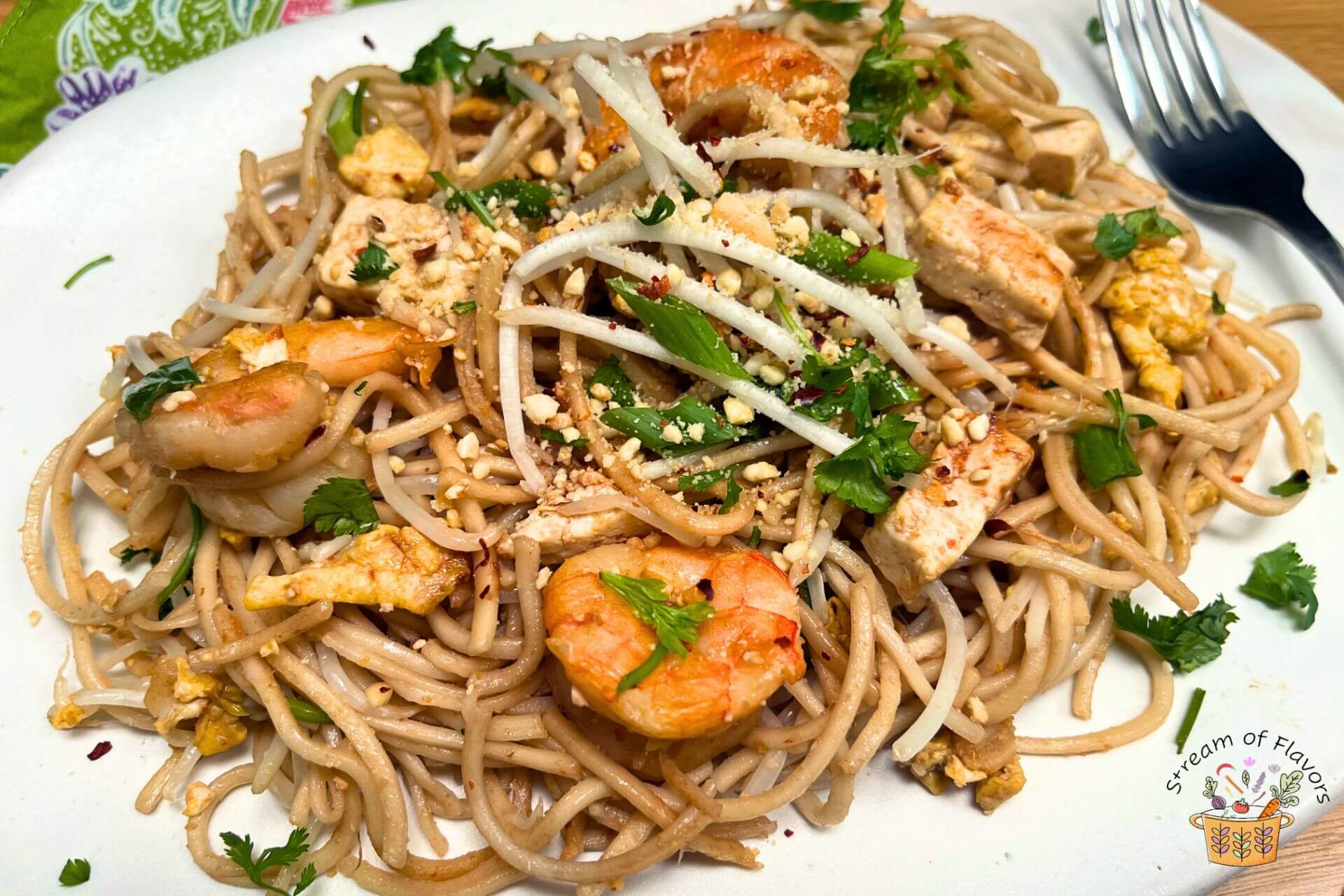
Ingredients:
- Noodles: millet noodles; feel free to use whole wheat or brown rice noodles to keep the recipe diabetic-friendly.
- Spice paste: garlic, dried red chili, and shallot soaked in water and ground to a paste; use a few dried shrimp and/or lemongrass optionally
- Protein: shrimp, tofu and eggs; boneless chicken strips can also be added
- Veggies: Beansprouts; sugar peas and carrots are optional
- Sauces: Date Lady’s date syrup, soy sauce and fish sauce
- Garnish: cilantro, roasted crushed peanuts, and scallions with lime wedges on the side
Here are the step-by-step instructions on how to make this dish. Please refer to the recipe card for the measurements.
How to make Pad Thai With Shrimp:
Prepare the ingredients. To make the spice paste, soak the ingredients for 5 minutes in warm water and grind to a fine paste with a tablespoon of water. Peel and devein the shrimp with or without the tails. Cook the noodles per the manufacturer’s instructions and keep them aside.
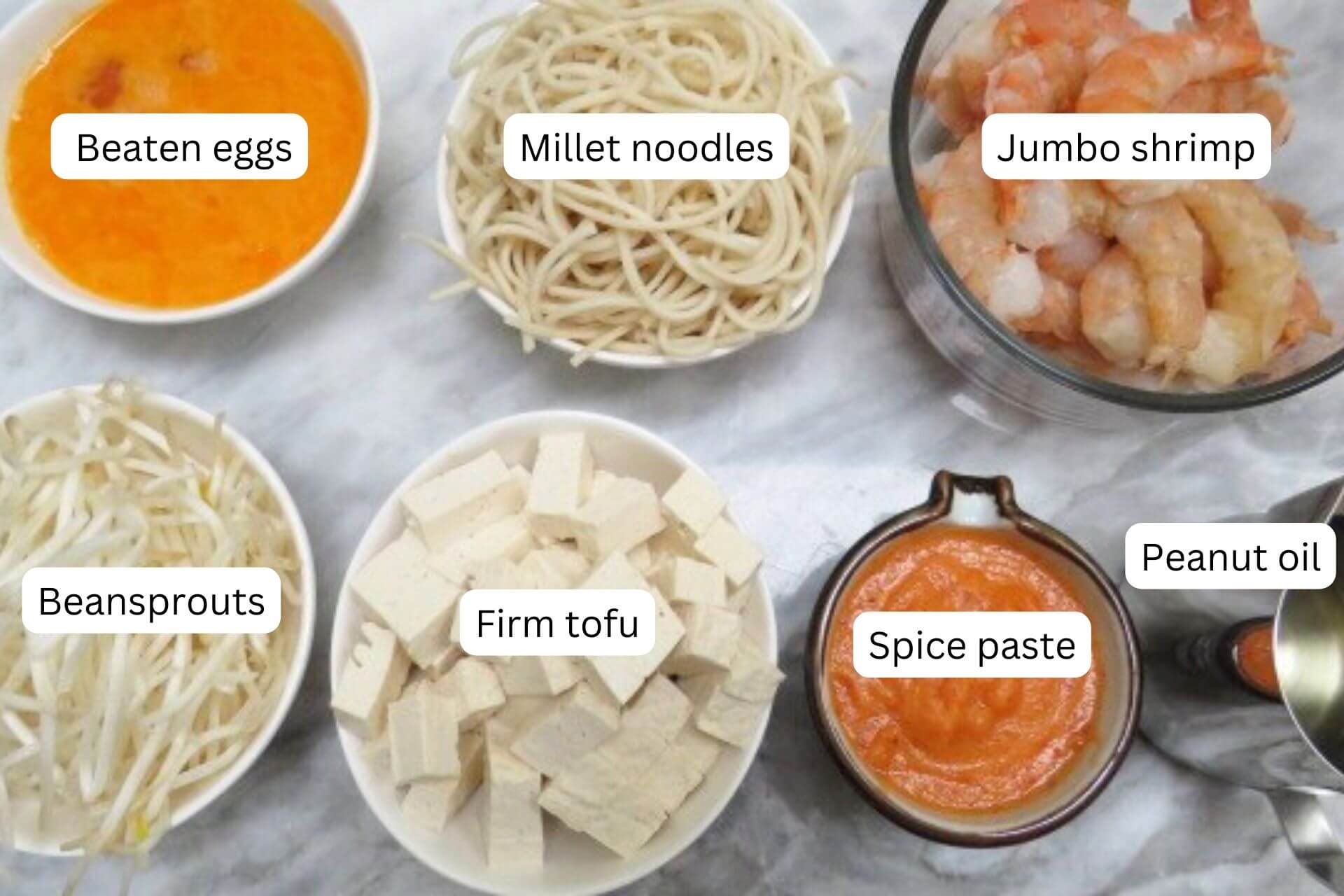
2. To make the sauce mixture, soak the tamarind in 3 tablespoons of warm water for 5 minutes and strain the pulp or use readymade tamarind pulp.
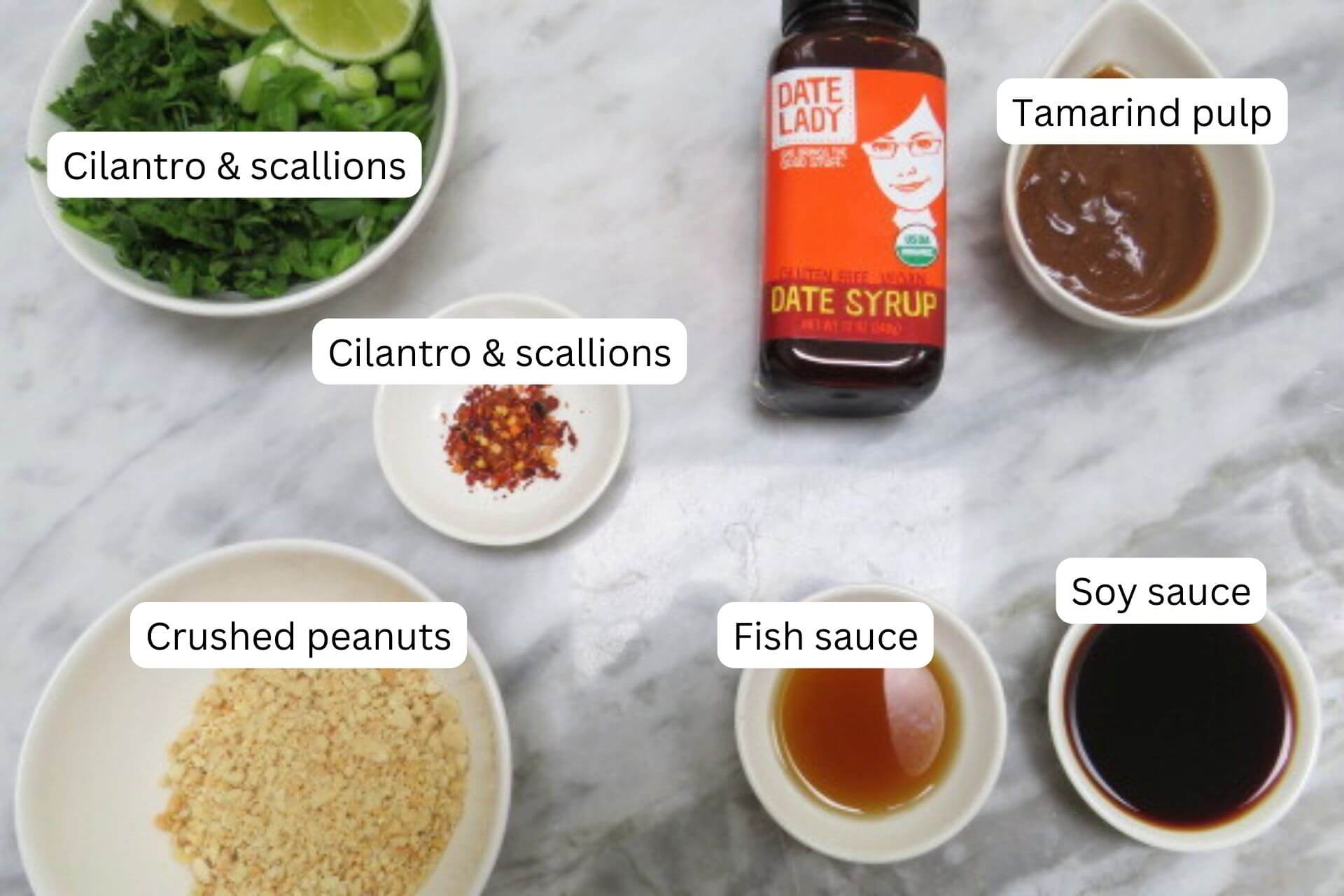
3. Mix the ingredients for the sauce mixture in a bowl and keep it aside.
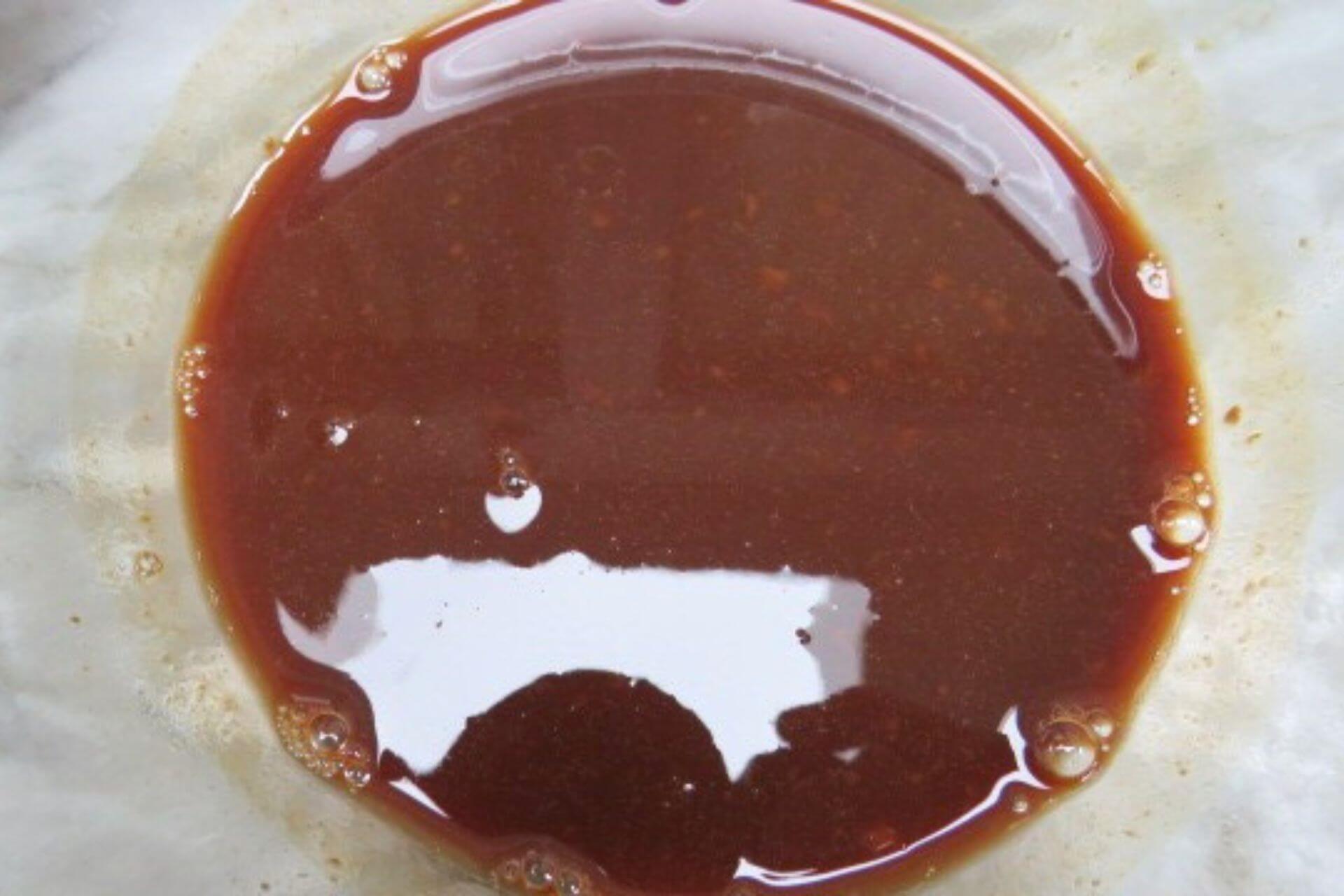
4. To stir fry the Shrimp Pad Thai, add the peanut oil to a hot wok. Add the spice paste and sauté for 2 minutes. Add the shrimp and stir fry for 1-2 minutes. Then, add the tofu and beaten eggs and sauté until cooked for a minute. Put the cooked noodles into the wok and stir fry for a minute.
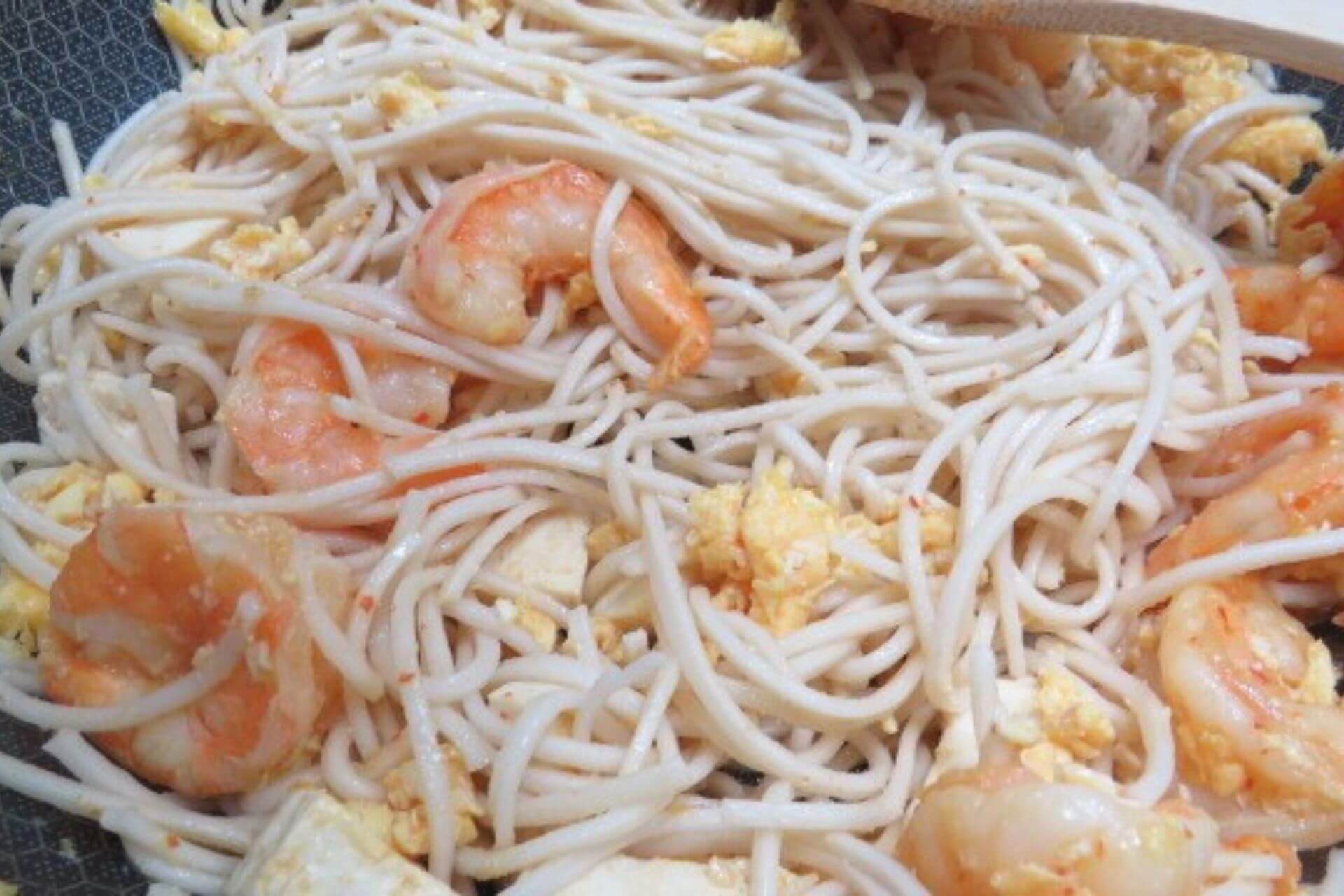
5. Add the sauce mixture and sauté for 2-3 minutes. Turn off the heat and add the beansprouts. Garnish with scallions, cilantro, crushed peanuts, and chili flakes, and squeeze some lime juice.
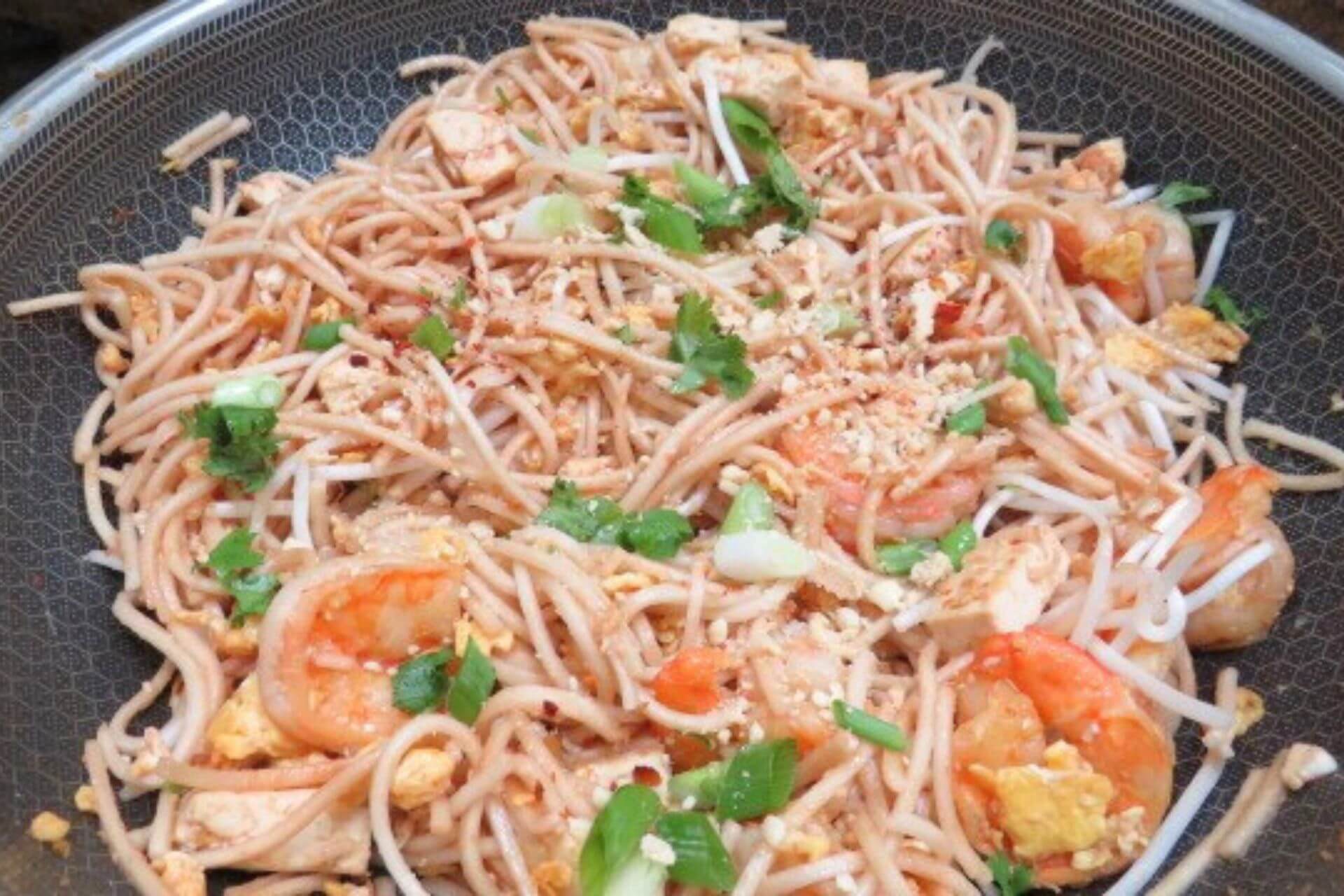
- Noodles must be al dente or slightly undercooked while stir-frying, otherwise you will get a soggy mass.
- Use oil a little when the ingredients stick to the wok. I used the honeycomb wok with a nonstick surface.
- Make noodles in small batches for best results. I divided the ingredients into two batches.
- Keep everything prepared and ready before you start cooking.
- Please cook the noodles (al dente) and then rinse with cold water to prevent the noodles from sticking together.
Serving suggestion:
Serve Shrimp Pad Thai hot with crushed peanuts and chili flakes on top. Garnish with scallions or cilantro and a lime wedge. You could also serve it with a quick salad made with tofu, cucumber, shallots, and beansprouts.
Storage:
This Shrimp Pad Thai can be refrigerated for two days or frozen for three months if you have leftovers. The sauce mixture can be refrigerated for 2-3 days, while the noodle dish can be refrigerated for one day.
Other noodle recipes that you might like:
Shrimp Pad Thai Recipe
Equipment
- Wok
Ingredients
For the spice paste:
- 5 dried red chili deseeded
- 1 shallot medium
- 6 clove garlic peeled
- 6 dried shrimp optional
For the sauce mixture:
- 1½ tbsp tamarind pulp
- 2 tbsp fish sauce
- 5 tbsp soy sauce
- 3 tbsp Date Lady date syrup
For the Shrimp Pad Thai:
- 2-3 tbsp peanut oil adjust as needed
- 1 lb jumbo shrimp
- 1 lb millet noodles
- 12 oz firm tofu
- 5 eggs
- ½ lb beansprouts
- 6 cilantro sprigs garnish
- ¼ cup roasted peanuts crushed for garnish
- 1 tsp chili flakes garnish
- a few lime wedges, scallions
Instructions
- Prepare the ingredients. To make the spice paste, soak the ingredients for 5 minutes in warm water and grind to a fine paste with a tablespoon of water.Peel and devein the shrimp with or without the tails.Cook the noodles per manufacturer's instructions.
- To make the sauce mixture, soak the tamarind in 3 tablespoons of warm water for 5 minutes and strain the pulp or use readymade tamarind pulp.
- Mix the ingredients for the sauce mixture in a bowl and keep aside.
How to make the Shrimp Pad Thai using my recipe:
- In a hot wok, add the peanut oil a little at a time. Add the spice paste and sauté for 2 minutes. Add the shrimp and stir fry for 1-2 minutes. Then, add the tofu and beaten eggs and sauté until cooked for a minute. Put the cooked noodles into the wok and stir fry for a minute.
- Add the sauce mixture and sauté for 2-3 minutes. Turn off the heat and add the beansprouts. Garnish with scallions, cilantro, crushed peanuts, and chili flakes and squeeze lime juice on top.
Video
Notes
- Store-bought tamarind pulp is not flavorful. Fresh tamarind will yield an aromatic sauce.
- You could also use leftover shredded chicken.
Nutrition


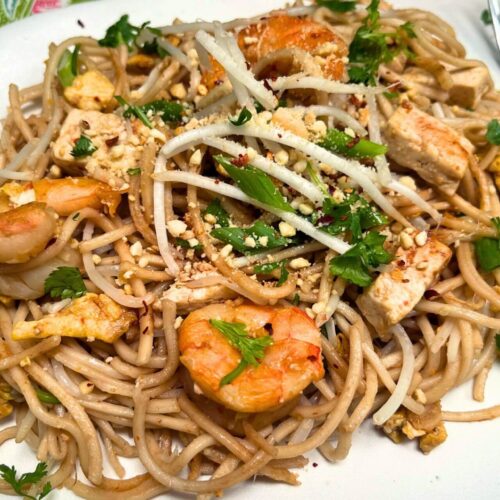
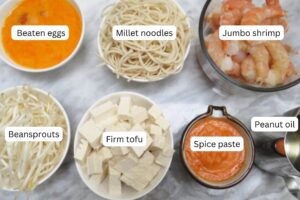
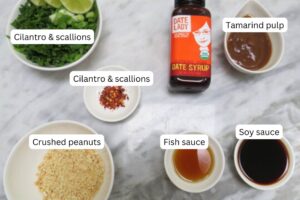

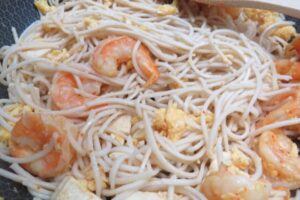
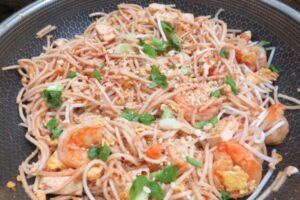




















this is a perfect, healthy recipe for such a traditional dish!
Thanks, Ava!
I love the addition of snap peas! Great recipe!
Turned out great!
Thanks, Abigail!
Thanks for sharing – I had a great time making this!
You’re welcome, Archana!
this was so easy to make in my dorm, thank you!